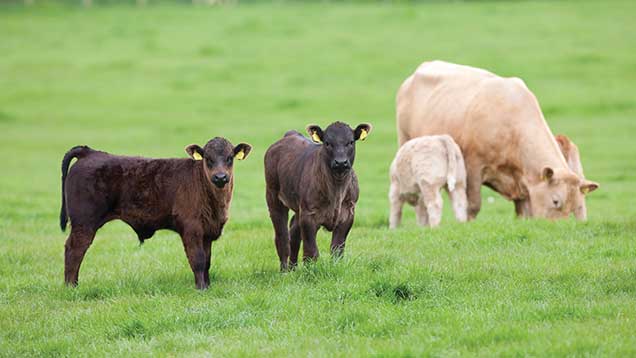10 steps to build a profitable Welsh beef industry
 © Tim Scrivener
© Tim Scrivener The Welsh beef sector needs to become more customer-focused and all parts of the supply chain have to work together, a review has found.
A report by SAC Consulting for Hybu Cig Cymru – Meat Promotion Wales has set out a series of changes farmers, processors and retailers can make to build a long-lasting profitable industry.
It recommends a “hybrid approach” to build a market-driven industry that is helped by targeted government help.
Farmers Weekly has slimmed down the report down to its 10 key suggestions.
- Money and effort must be invested in making Welsh suckler and dairy beef systems more productive. The average Welsh herd had a negative net margin of 108p/kg for taking a suckled calf to weaning in 2012-13 – even the top third lost 20p/kg. Research and development must be turned into practical on-farm solutions.
- A national genetics improvement scheme could be set up, like the one run in the Irish Republic. This would ensure that a bigger share of the calf crop carries top beef genetics.
- Alongside work on TB, national schemes to eradicate key cattle diseases like Johne’s, BVD (bovine viral diarrhea) and IBR (infectious bovine rhinotracheitis) could be started.
- Agri-environment payment rules should be tweaked to encourage farmers to keep suckler cows grazing on the Welsh hills. This would slow the slide in cow numbers and reward the contribution grazing makes to biodiversity, access and managing the landscape.
- A central database should be set up to gather key farm performance information that producers can use to benchmark and improve. In return for giving their data, farmers should be given subsidised access to tools and equipment to help use the information to make improvements on their own farm.
- The way the red meat levy is collected should be changed to better reflect the number of cattle born and reared in Wales. The report estimates that last year 224,000 of the Welsh-born cattle finished were slaughtered outside the country. This means the levy is collected outside Wales. With fairer allocation, HCC could put more resources into understanding changing shoppers’ habits, marketing work to attract a premium price for all Welsh beef and adding value with fifth quarter products.
- Farmers, processors and retailers can collaborate to add extra value and boost each other’s performance. Examples where it works should be learnt from. The report picked out Waitrose’s Welsh Black beef scheme, integrated beef producer Blade Farming and Celtic Pride, beef supplier to councils, hospitals, government, pubs and restaurants. These can help build trust, lower the cost of transactions and move pricing behind spot arrangements.
- Electronic Identification (EID) technology could be more widely used for cattle, helping to boost transparency and communicate slaughter feedback to farmers. Using the British Cattle Movement Service (BCMS) data better could benefit traceability, genetics and help predict market supply.
- Having more cattle slaughtered and processed in Wales would create jobs and ensure the economic value stays in the country’s economy. About 147,000 cattle were processed through Welsh abattoirs last year, of which 42% came from outside Wales.
- While it is a UK-wide issue, the EUROP carcass grading systems needs reviewing. Other tools like automated carcass grading and meat yield prediction could help producers and processors better target what their customers need and want.
See more
